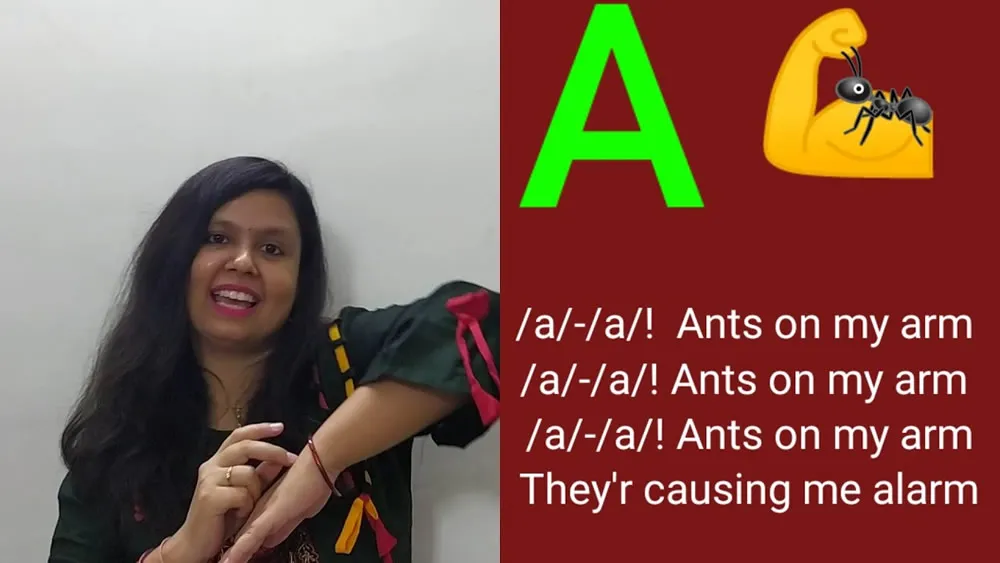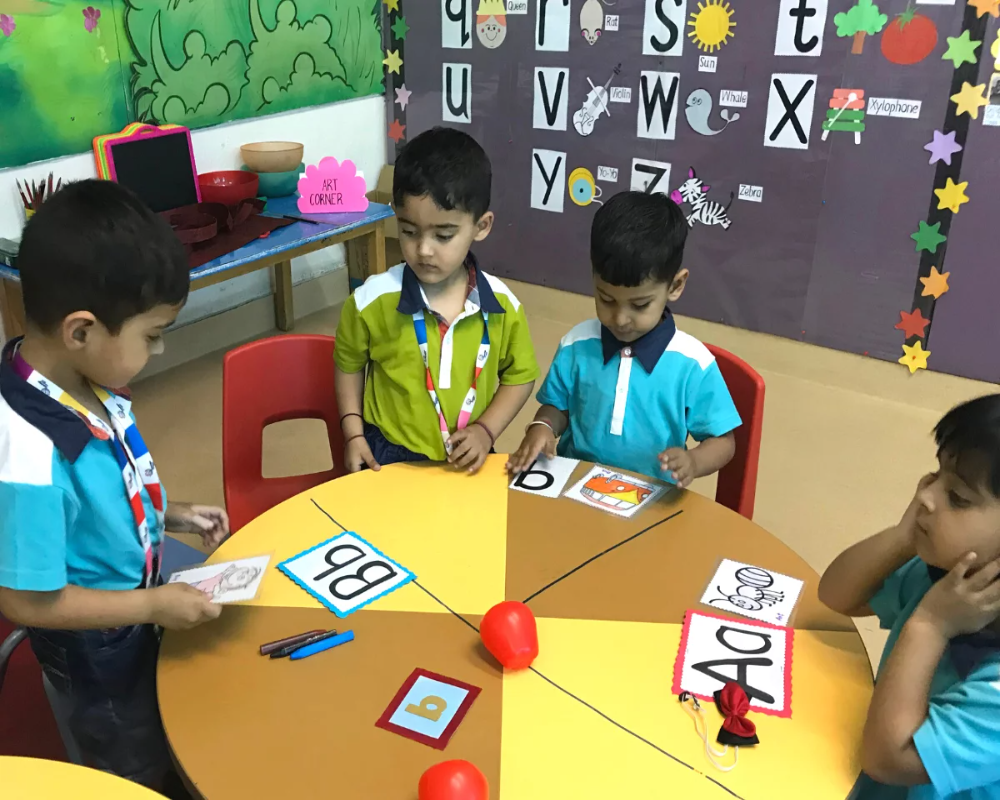Teaching Phonics Online Course

Source: d2c0db
Teaching Phonics Online Course
The art of teaching reading and spelling has taken a significant leap forward with the introduction of the Teaching Phonics Online Course by the Vidhyanidhi Education Society (VES). Teaching Phonics Online Course is intended to be much more than a straightforward course and acts as a starting point for teachers to comprehend and successfully execute phonics training in their classrooms.
This Teaching Phonics Online Course makes sure that teachers are well-equipped to help their students progress toward reading fluency by emphasizing useful, empirically supported practices. You may encourage a lifetime love of reading and learning in your students by becoming an expert at teaching phonics.
Table of Content
- Career Scope For Certified Phonics Teachers
- Benefits Of Doing Phonics Educator Course From VES
- Course Content For Phonics Course
- Duration Of Phonics Educator Course
- Eligibility For Phonics Educator Course
- Phonics Teacher Training In Mumbai
- Why is Learning Phonics Important?
- What are the 42 Sounds in Phonics?
- How to Teach Phonic Sounds?

Source: scholastic
Career Scope For Certified Phonics Teachers
We take immense pleasure in announcing that our past students have made substantial strides in their careers as phonics specialists and coaches. Many have secured teaching positions in the eminent state, ICSE, CBSE, or IB schools. VES’s Teaching Phonics Online Course certification has aided in promotions and also encouraged the initiation of thriving phonics classes.
By completing this Teaching Phonics Online Course, a plethora of rewarding Career Scope For Certified Phonics Teachers will be available:
- Becoming a certified phonics teacher in top-tier Indian or international schools.
- Taking up the role of a special needs or remedial teacher.
- Qualifying for promotion as an in-service teacher.
- Embarking on an entrepreneurial journey by setting up your phonics classes.
- Serving as a phonics teacher trainer in any institution.
- Taking up roles as a phonics curriculum planner or content developer.
- Assisting your own child’s English language growth.
- Considering a career transition.
Benefits Of Doing Phonics Educator Course From VES
You can expect the following Benefits Of Doing Phonics Educator Course From VES:
- Clear instructions to inaugurate your phonics classes for young students.
- A comprehensive teacher’s guidebook.
- More than 300 printable, easy-to-utilize worksheets to start your phonics teaching career.
- A package of 42 printable flashcards to support teaching.
- Around 650 words repository featuring digraphs and variant vowel sounds like ai, oa, ay, ow, ei, etc.
- Additional resources for enhancing teaching.
- Practical tips for managing daily lessons effectively.
- A certificate that holds wide acceptance and recognition.
For More details Call / Whatsapp us at +919869546913 / +919869866277
For Downloading the brochure Click Here

Source: phonicspower
Course Content For Phonics Course
The Course Content For Phonics Course will direct attention toward the following areas:
- An understanding of why Phonics is essential in education
- Knowledge about the various Phonics methodologies available
- A comparative review of the Whole Language Approach and Phonics
- Methods using stories, physical activities, and music to teach letter sounds
- Techniques for proficient letter crafting
- Sound combination strategies to boost reading skills
- Sound isolation techniques to improve spelling
- Familiarity with beginning and ending blends
- Interactive learning of digraph sounds through engaging stories and activities
- Differentiation between Digraphs and Blends
- Ways to handle complex words
- Rules that govern the use of Phonics
- Study of different vowel sounds and their corresponding written forms
Duration Of Phonics Educator Course
This 18-hour-long Duration Of Phonics Educator Course is structured for an enriching experience.
Eligibility For Phonics Educator Course
For Eligibility For Phonics Educator Course, individuals must possess rudimentary English skills.
Phonics Teacher Training In Mumbai
VES’s ‘Certificate Teaching Phonics Online Course’ is rooted in the esteemed Synthetic Phonics Methodology from the UK. We provide an optimal blend of theoretical understanding and practical skills training. We promise to offer a rewarding learning experience and cultivate you into a top-notch phonics educator.
Salient points of our Phonics Teacher Training In Mumbai:
- Year-round new batches
- Economically priced Teaching Phonics Online Course fee
- Limited seats per batch to ensure personalized attention
- State-of-the-art, air-conditioned classrooms
- Experienced teaching professionals
- Provision of study materials, presentations, live demonstrations, and audio-visual content
- Assistance for initiating your phonics classes – we guide you on the course’s progression, setting up your center, and creating lesson plans.
Undoubtedly, you’ll be ready to get trained in Phonics at VES after understanding these attributes!
For More details Call / Whatsapp us at +919869546913 / +919869866277
For Downloading the brochure click here

Source: ytimg
Why is Learning Phonics Important?
Several reasons make Learning Phonics Important:
Reading Skills
Phonics methodology teaches reading by focusing on the relationship between sounds and letters. It helps children decode and recognize words by breaking them down into individual sounds. By understanding the phonetic principles, children can sound out words they have never encountered before, leading to improved reading skills and comprehension.
Spelling Skills
Phonics instruction also helps children develop their spelling abilities. When children learn the sounds associated with different letters or letter combinations, they can apply this knowledge to spell words phonetically. Understanding the relationship between sounds and letters helps them make more accurate spelling choices and reduces reliance on rote memorization.
Vocabulary Expansion
Phonics instruction enhances vocabulary development. By learning the sounds of individual letters and letter combinations, children can decode and understand unfamiliar words. This enables them to independently expand their vocabulary by deciphering new words encountered in reading materials.
Independent Reading
Phonics empowers children to become independent readers. Once they grasp the phonetic principles, children can read unfamiliar texts with minimal assistance. They can sound out words and derive meaning from the context, fostering reading fluency and comprehension. This independence boosts their confidence and motivation to explore a wide range of written materials.
Communication Skills
Phonics instruction helps children develop strong oral language skills. By understanding the sounds of spoken words and their corresponding letters, children can improve their pronunciation, articulation, and overall communication abilities. This foundation in phonics supports more explicit speech and facilitates practical verbal expression.
Comprehension Reading
Phonics plays a crucial role in reading and understanding comprehension. Phonics helps lay a solid foundation for decoding and word recognition, with which children can devote more time to comprehending the text’s meaning and context. It also allows them to allocate cognitive resources to higher-level comprehension tasks.
Overall, learning phonics is crucial because it provides the fundamental skills necessary for reading, spelling, vocabulary development, independent reading, effective communication, and improved reading comprehension. It equips children with the tools to become proficient readers and lays the groundwork for a lifetime of successful literacy.
For Course fees please call or Whatsapp on 9869546913 / 9869866277.
For Downloading the brochure click here

Source: oakridge
What are the 42 Sounds in Phonics?
According to the Phonics methodology, the English language consists of 42 sounds called Phonemes.
Here are the 42 Sounds in Phonics with examples representing the respective sounds:
- /a/ (as in cat, apple)
- /e/ (as in bed, elephant)
- /i/ (as in pig, insect)
- /o/ (as in dog, octopus)
- /u/ (as in bus, umbrella)
- /ae/ (as in ant, apple)
- /ee/ (as in bee, tree)
- /ie/ (as in pie, tie)
- /oe/ (as in toe, goes)
- /ue/ (as in blue, clue)
- /ai/ (as in rain, train)
- /ei/ (as in eight, sleigh)
- /oi/ (as in coin, join)
- /ou/ (as in house, mouse)
- /au/ (as in haul, author)
- /oo/ (as in book, took)
- /oo/ (as in moon, spoon)
- /er/ (as in her, term)
- /ar/ (as in car, star)
- /or/ (as in fork, storm)
- /ur/ (as in fur, burn)
- /ir/ (as in bird, shirt)
- /ur/ (as in turn, hurt)
- /ear/ (as in ear, hear)
- /air/ (as in hair, chair)
- /ure/ (as in sure, pure)
- /er/ (as in water, letter)
- /tr/ (as in tree, truck)
- /br/ (as in brick, brush)
- /dr/ (as in drum, dress)
- /cr/ (as in crown, crab)
- /fr/ (as in frog, friend)
- /gr/ (as in grape, green)
- /pr/ (as in prince, prize)
- /kr/ (as in crab, crown)
- /wr/ (as in write, wrong)
- /shr/ (as in shirt, shrimp)
- /str/ (as in street, strong)
- /spr/ (as in spring, spray)
- /spl/ (as in splash, split)
- /scr/ (as in scream, scrape)
- /sm/ (as in small, smile)
You must note that these sounds differ according to regional accents and dialects. Also, there are several irregular words in the English language which do not follow these sounds.
How to Teach Phonic Sounds?
Teaching phonic sounds can be an exciting and engaging experience for students.
Here are some innovative methods to Teach Phonic Sounds:
Sound Safari
Transform your classroom into a phonics adventure by creating a “Sound Safari” theme. Assign each phonic sound to a different animal or object. For example, “a” can be an alligator, “b” can be a bird, and so on. Create colorful posters or cut-outs of these animals/objects and hide them around the room. Give students a “Sound Safari” checklist and have them go on a hunt to find and identify the phonic sounds. This interactive activity will make learning phonics fun and memorable.
Phonics Charades
Divide the class into small groups and assign each group a specific phonic sound. Ask each group to come up with a list of words that contain that sound. Then, have them act out the words through charades, without speaking. The other groups must guess the phonic sound and the word being acted out. This game encourages active participation and helps reinforce the association between the sound and corresponding words.
Song and Dance
Design catchy rhymes or songs to accentuate the phonic sounds. Use popular tunes or create your melodies. Incorporate movements or dance steps that represent each sound. For example, for the “sh” sound, students can pretend to shiver or shake. Sing and dance together as a class, and encourage students to come up with their verses or dance moves. This multisensory process enhances memory and makes learning phonic sounds delightful.
Phonic Scavenger Hunt
Organize a phonic scavenger hunt where students have to search for objects or images that represent different phonic sounds. Provide them with a list of words containing specific sounds and ask them to find corresponding items within the classroom or school environment. For instance, if the sound is “ch,” students can search for a chair, chalk, or a chalkboard. This activity encourages observation skills and reinforces the connection between sounds and real-life objects.
Storytelling with Sound Effects
Create a collaborative storytelling experience that emphasizes phonic sounds. Start a story by introducing a character and setting. Each student takes turns adding to the story but must include a word or phrase containing a particular phonic sound. As students contribute, encourage them to use expressive sound effects or voices that highlight the phonic sounds. This imaginative activity promotes creativity, listening skills, and phonics integration.
Remember to provide ample opportunities for practice, repetition, and reinforcement during these activities. By incorporating innovative and enjoyable methods, students will develop a strong foundation in phonic sounds while having a great time learning.
Teaching Phonics Online Course
“Ready for a phonics revolution? Join Vidhyanidhi’s Teaching Phonics Online Course now!”
For More details Call / Whatsapp us at +919869546913 / +919869866277
For Downloading the brochure Click Here
FAQs
How to become a Phonics trainer?
To become a Phonics trainer, secure a teaching certification and then enhance your skills with VES's Phonics Teacher Training Programme. Start your journey today!
What order should I teach Phonics?
Teach Phonics in this sequence: individual sounds (like /s/), blending sounds (as in /s/ + /a/ = 'sa'), then complex sounds (like 'sh' in 'ship').
How to teach blends in Phonics?
Teach phonics blends by combining consonants, starting with two letters like /b/ + /l/ = 'bl' in 'blue'. Gradually introduce three-letter blends.
What is Phonics sound?
Phonics sounds refer to the sounds made by individual letters or letter groups. For example, 'm' makes a /m/ sound as in 'moon', while 'th' sounds like /θ/ in 'think'.




